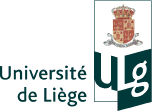AnaLogiQual 2008
Software for qualitative analysis : Social and technical innovations
Innovations in QDA-software : the integration of visual tools
This paper will discuss the problem of data visualisation with QDA-software from two perspectives:
In the first part I will focus on theoretical and methodological issues and argue that visual thinking is creative, helpful for exploration and for discovering patterns, relations and structures in social science data. Scholars like Tony Buzan or Lothar Krempel have shown conclusively that complex information and dependencies can be translated into easy-to-read graphical representations.
The second part of the paper will focus the practice of research, particularly the development of new visual tools that are now more and more integrated in MAXQDA. Data display and visualisation are areas of research methods that become more and more important, particularly in qualitative and mixed methods approaches. As Miles and Huberman pointed out in their widely known book Qualitative data analysis– an expanded sourcebook better displays are a major avenue to valid qualitative data analysis“. Data displays may have multiple functions in the analysis process: data condensation, data reduction, data exploration, idea management and last but not least data presentation.
In the practice of qualitative data analysis, it is useful to differentiate between twotypes of visualisations: case-oriented and cross-case visualisations. The paper will demonstrate how case-oriented visualisation like MAXQDA’s TextPortrait and Codeliner offer a visual display of the codes applied to a text. The crucial point is to create data displays that are highly interactive and connect the picture and diagrams directly to the source material. Cross-case displays like MAXQDA’s Code-Matrix Browser show more complex information and make it easy to identify relations between the different elements of a a qualitative project. Finally the paper will give an outlook on new visual procedures that are planned for the next MAXQDA version, for instance a series of mapping tools for visualizing the relation of topics, codes, concepts and individuals. One of the highlights with the working name VICO (“Visual Cluster Organization”) brings together cluster analysis techniques, qualitative concepts (in the sense of Grounded Theory) and the idea of locating individuals in a multidimensional property space.

|
Editor : Ishs-Ulg, 2008
Supported by Fonds National de la Recherche (Luxembourg) and Association pour la Recherche Qualitative (Quebec) |

|
